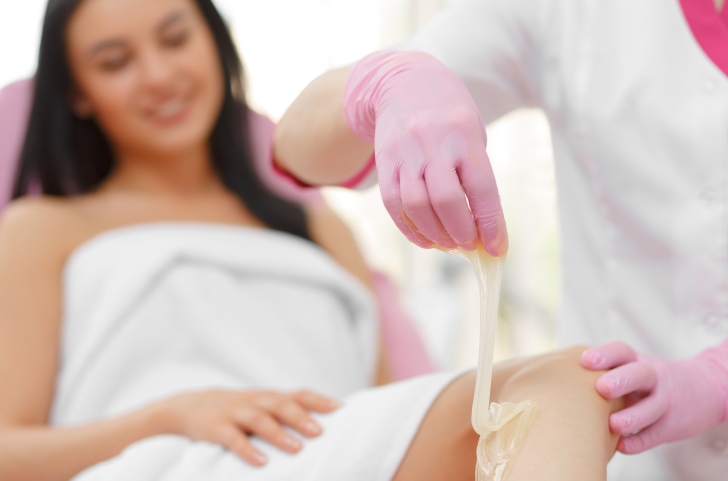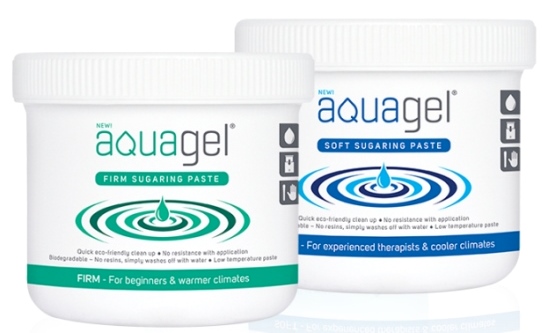
Sugaring, an early method of hair removal, has been used to remove body hair for centuries but is undergoing a recent resurgence in popularity. Holly Hayes, the international training coordinator at Caronlab Australia, explains how this ancient technique can work wonders in a modern salon.
What exactly is sugaring?
The technique of sugaring uses a natural toffee-like substance that is kneaded into the skin repeatedly, removing the hair as it goes. The paste is spread or moulded onto the skin by hand or with a spatula against the direction of hair growth. It is said to seep down into the hair follicle and wrap itself around the shaft of the hair. When the sugaring paste is flicked off, the hair (including the bulb) slides out in the direction in which it grows.
Why do you think it has become so popular in recent times?
These days’ consumers are looking for more natural alternatives for their food, skincare and cleaning products and are taking more notice of what we are putting on and in our bodies. So not surprisingly this shift towards natural/chemical free products is also influencing their choice in hair removal methods.
What advantages, if any, does it have over waxing?
While waxing and sugaring techniques are different, the results are much the same when performed correctly. Therapists who have been trained in waxing and decide to offer sugaring essentially need to “unlearn” everything they know about waxing to become a proficient body sugarer and perfect their technique. Some clients will swear black and blue that sugaring hurts less than waxing, but just like any treatment it really comes down to the skill of the therapist. Both techniques remove hair from the follicle and that’s not going to tickle although both treatments can be made substantially less painful if the therapist has a good technique.

What types of sugaring pastes are available on the market?
Sugaring pastes or gels are essentially made from sugar, water and lemon juice. While all recipes are slightly different, the pastes have been made from those same basic ingredients since they originated all those centuries ago in the Middle East. Caronlab produces Aquagel Sugaring Paste in two varieties – firm and soft:
Aquagel Firm Sugaring Paste: Easy to control, the firm paste is ideal for beginners. It is designed for use on warmer areas of the body such as the bikini, underarms and face – and is therefore also excellent for use in hot and humid climates.
Aquagel Soft Sugaring Paste – Ideal for experienced therapists, the soft paste is perfect for use on larger body area such as the legs, chest and back.
Both pastes are suitable for use with a spatula or the hand method – and are packaged in jars that fit inside Caronlab 500ml Professional Wax Heater where they can be heated on the ‘low’ to ensure the perfect working temperature.
What should a salon owner consider before adopting sugaring?
If you’re considering adding body sugaring to your treatment menu, there are some important things for you to think about. Firstly, ask your clients if they are happy with their waxing treatments? If they’re not happy, delve into the reasons why. Are your therapists lacking confidence or expertise? Rather than re-training your staff in a skill they have already learnt, maybe they would benefit from a refresher waxing workshop. Getting their waxing skills up to scratch will be a lot easier, quicker and cost effective than learning an entirely new technique.
Nonetheless, there will always be a niche client market wanting holistic and completely natural treatments, and business savvy salons can reap the benefits of this with the help of an effective marketing strategy. Salons offering sugaring services generally charge more for them than salons offering waxing treatments do as it takes more time to perform a sugaring treatment and the paste generally costs more per kilo than your typical waxes do. Fortunately, clients seeking natural alternatives are usually willing to pay that little bit extra.
Sugaring can also be a great option for mobile therapists as the paste requires little- to no- heating so it makes travelling and setting up for appointments easy. In addition, the paste can simply be washed off with warm water, so no extra products are necessary during the treatment or for cleaning-up – meaning clients can be turned over quickly and efficiently.
In summary, sugar paste can be a perfect replacement for waxes in some salons and an alternative ‘option’ on the waxing menu in others. It is not necessary for every salon, and salon owners should take into consideration their client base before investing in training their staff in the sugaring method.
Caronlab has been supplying beauty salons in Australia and around the world with superior salon waxes and accessories since 1979. For more information visit www.caronlab.com.au.

